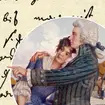Tchaikovsky - Violin Concerto in D
Along with the violin concertos of Bruch and Mendelssohn, this warhorse by Tchaikovsky is one of the most important works for the instrument in the history of Romantic music. It is also a piece that, like the 1812 Overture, is implicitly linked with Tchaikovsky’s emotional turmoil and sham marriage.
Written in 1878, Tchaikovsky's violin concerto is one of the greatest works ever written for the instrument. But who is it really about?
Just three months after his doomed union with Antonina Milyukova, Tchaikovsky fled Russia for the countryside. From there, he travelled around Italy and Switzerland, with his trip largely funded by his patron, Nadezhda von Meck. Tchaikovsky’s travels ended at Lake Garda, where, among other visitors, he was joined by his former music-theory pupil, the violinist Joseph Kotek.
It’s long been argued that Tchaikovsky’s feelings for Kotek were much more than platonic. During the stay he confided to a friend,
"I love him very much – but by now quite differently from before." Whatever the nature of Tchaikovsky’s love for him, one thing is very clear: Kotek was the absolute inspiration for the Violin Concerto. The young violinist was studying with Joseph Joachim, and eagerly took up the challenge of learning this new work. Interestingly, Tchaikovsky decided to avoid dedicating the concerto to the young soloist. The reason? As he confided to his publisher, "... in order to avoid gossip of various kinds".
























